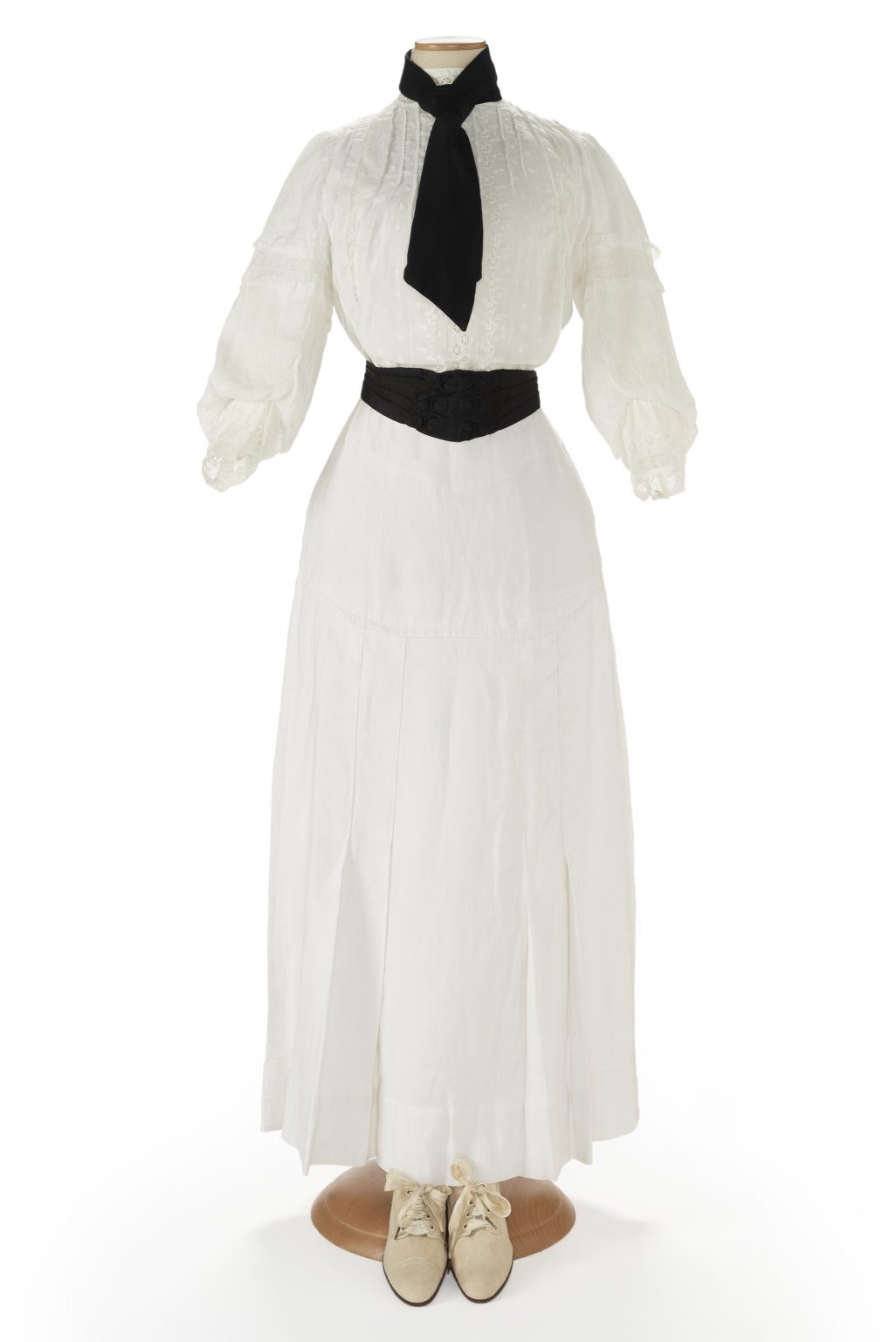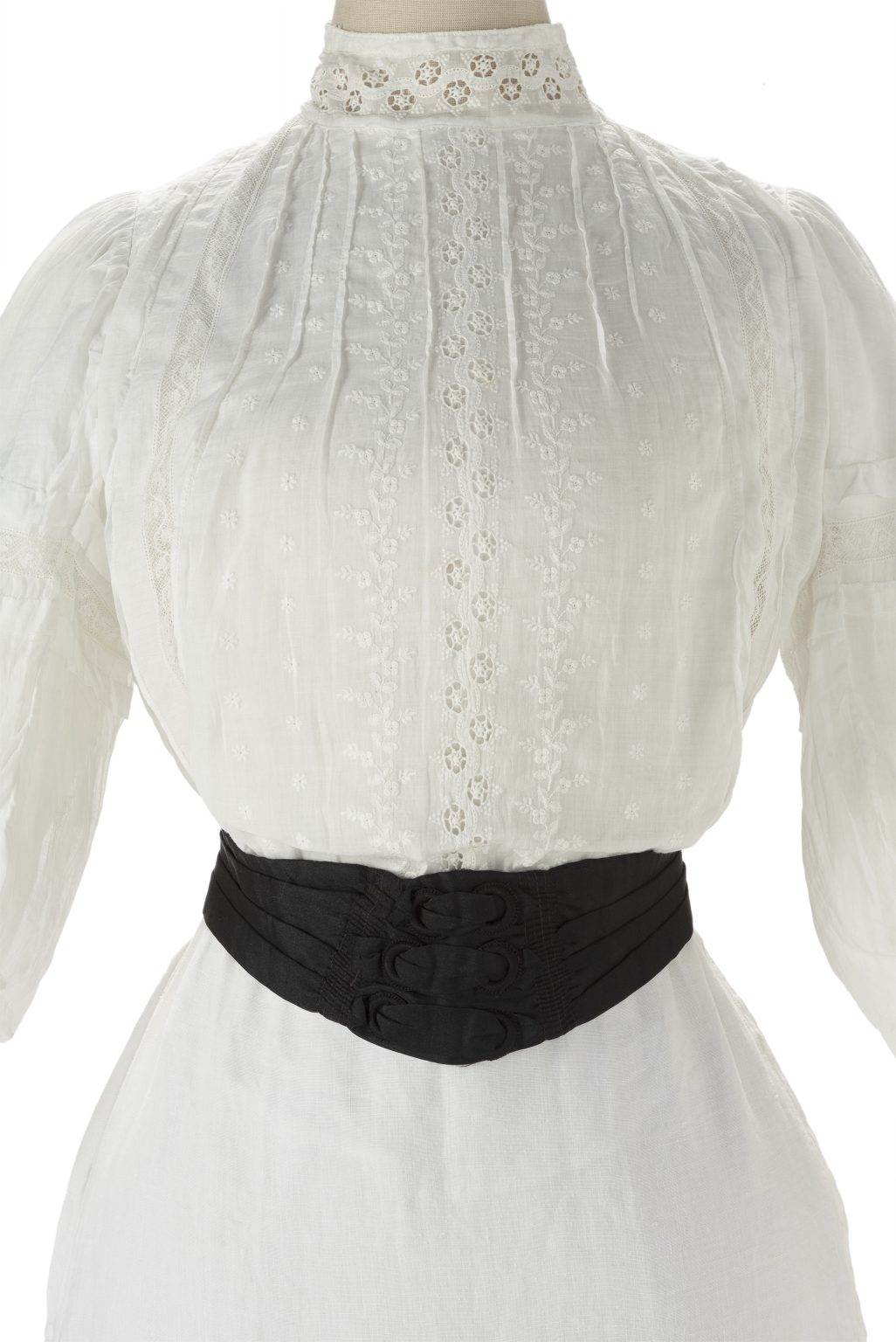
Tennis suit
Ankle-length flared skirt in white linen with a boned waistband and decorative outer belt fastened with a mother-of-pearl button, circa 1900 - 1910, Camilla Colombo Collection.
Women's white cotton lace-up sports shoes with silk laces and 5cm cuban heels, label Louvy & Abeles for Bally, Turin Genoa, circa 1900-1920, Camilla Colombo Collection.
Shaped belt in black silk satin with decoration centre front, circa 1900 - 1909, Camilla Colombo Collection
Details

Historical context
Women and tennis
From the Belle Époque onwards, the desire to exercise in their free time became widespread among the rich and middle class. One of the most popular sports was tennis, which began in London in 1874 and spread throughout Europe. In 1884, Wimbledon, the world’s oldest tournament, introduced women’s singles. In 1913, women’s doubles and mixed doubles were added, thus officially bringing women into professional tennis competitions. Women’s sportswear at the beginning of the 20th century, however, was still no different from daywear. To play tennis, women wore white shirts and ankle-length skirts over a corset that was only slightly less constricting than that of everyday life. On their feet they wore dark boots and
sometimes they also wore a straw hat and a tie.
With the First World War, a practical, often military inspired, suit, with ample jacket and skirt, became an essential part of women’s clothing, and entered the world of sport. However, the big revolution came at Wimbledon in the 1920s with French tennis player Suzanne Lenglen who brought Flapper fashions to the court. Suzanne appeared at the tournament in a dress without petticoats with the hem above the calf. A short blouse inspired by men’s waistcoats with a V-neck, and white silk stockings completed the look. Instead of a straw hat she preferred to wear a practical bandeau. This sports outfit was created by the couturier Jean Patou in 1925, who paved the way for suitable tennis clothing.